LÉONARD TSUGUHARU FOUJITA (1886-1968)Maternité signed and inscribed 'Foujita Paris' (lower right) gouache, watercolour, brush, pen and India ink and gold leaf on paper 23 x 17.5cm (9 1/16 x 6 7/8in). Executed circa 1957 FootnotesThe authenticity of this work has been confirmed by Sylvie Buisson. Provenance Galerie Claude Bernard (1957). Private collection. Anon. sale, Christie's, New York, 15 November 1990, lot 147. Sayegh Collection, France. Acquired by the present owner (2020). Exhibited Paris, Musée de Montmartre, Léonard Tsuguharu Foujita et l'École de Paris, 10 April - 23 June 1991, no. 47 (later travelled to Tokyo; titled 'Mère et Enfant'). Literature S. Buisson, Léonard Tsuguharu Foujita, Vol. II, Paris, 2001, no. 57.92 (illustrated p. 458). Léonard Tsuguharu Foujita may not have converted to Catholicism until 1959, but he took an early interest in painting ecclesiastical subjects from 1917. Maternité was executed circa 1957 and shows the artist's understanding of this traditional religious subject as an intimist and tender depiction of a mother and a child. Born in Japan into a high-ranking Samurai family, Foujita was attracted to Western culture and France in particular at a very early age. As Sylvie Buisson explains, Foujita's love affair with France began very early in Tokyo whilst stood in front of a painting by Claude Monet As a child, he would also be fascinated by the church that was located on his school path. At school, he studied French with the Marianist brothers, a Catholic branch that looked to the Madonna as a model of faith and spirituality and emphasised the importance of Jesus not only as the Son of God, but as the Son of Mary. A monumental sculpture of the Virgin Mary was placed in the courtyard that he passed daily. Foujita arrived in Paris in 1913 and quickly became a key figure of the bohemian art scene, meeting painters, sculptors and writers of the Montmartre and the Montparnasse districts. Along with his peers Picasso, Soutine, Kisling, Zadkine, van Dongen and Modigliani, he was one of the main figures of the first École de Paris. This term, coined by the art critic André Warnod in 1925, refers to the group of avant-garde artists who came to exercise their talents in the capital between 1905 and 1930. Although all the artists in this movement had their own particular style, they came together around the idea of developing artistic modernity. Foujita's success was almost immediate and his originality soon charmed the public at the Galerie Chéron and Galerie Paul Pétrides. Through meetings in Parisian bars and cabarets he was introduced to the Tout-Paris, the fashionable and affluent elite of the city, and became a well-known figure of this bustling and fascinating milieu of the interwar years. Foujita later returned to Japan to act as an official painter of the Imperial Army during the Second World War. His work was criticised by some of his peers for being war propaganda, but he remained appreciated and protected by wealthy patrons who enabled him to return easily to Paris in the 1950s, accompanied by Kimiyo, his new wife. This was the start of a new era for Foujita, who settled once again in Montparnasse, but to lead a rather quieter life. It was during this more mature and settled period that the present work was executed. Maternité is a gentle and delicate image, reflecting Foujita's unwavering optimism. The present work, with its soft and elegant figures set in a timeless scene, proves that his art remained untouched by the horror of war and man's cruelty. The depiction of the mother and child has always been an important subject in Western art, whose origins are rooted in the religious presentation of the Virgin and Child. The French word 'maternité' emphasises the secular relationship between the woman and her offspring, and indeed in the present work there is no aureole or halo to denote the holiness of the figures. However, the religious connotations remain obvious: the child's outstret
LÉONARD TSUGUHARU FOUJITA (1886-1968)Maternité signed and inscribed 'Foujita Paris' (lower right) gouache, watercolour, brush, pen and India ink and gold leaf on paper 23 x 17.5cm (9 1/16 x 6 7/8in). Executed circa 1957 FootnotesThe authenticity of this work has been confirmed by Sylvie Buisson. Provenance Galerie Claude Bernard (1957). Private collection. Anon. sale, Christie's, New York, 15 November 1990, lot 147. Sayegh Collection, France. Acquired by the present owner (2020). Exhibited Paris, Musée de Montmartre, Léonard Tsuguharu Foujita et l'École de Paris, 10 April - 23 June 1991, no. 47 (later travelled to Tokyo; titled 'Mère et Enfant'). Literature S. Buisson, Léonard Tsuguharu Foujita, Vol. II, Paris, 2001, no. 57.92 (illustrated p. 458). Léonard Tsuguharu Foujita may not have converted to Catholicism until 1959, but he took an early interest in painting ecclesiastical subjects from 1917. Maternité was executed circa 1957 and shows the artist's understanding of this traditional religious subject as an intimist and tender depiction of a mother and a child. Born in Japan into a high-ranking Samurai family, Foujita was attracted to Western culture and France in particular at a very early age. As Sylvie Buisson explains, Foujita's love affair with France began very early in Tokyo whilst stood in front of a painting by Claude Monet As a child, he would also be fascinated by the church that was located on his school path. At school, he studied French with the Marianist brothers, a Catholic branch that looked to the Madonna as a model of faith and spirituality and emphasised the importance of Jesus not only as the Son of God, but as the Son of Mary. A monumental sculpture of the Virgin Mary was placed in the courtyard that he passed daily. Foujita arrived in Paris in 1913 and quickly became a key figure of the bohemian art scene, meeting painters, sculptors and writers of the Montmartre and the Montparnasse districts. Along with his peers Picasso, Soutine, Kisling, Zadkine, van Dongen and Modigliani, he was one of the main figures of the first École de Paris. This term, coined by the art critic André Warnod in 1925, refers to the group of avant-garde artists who came to exercise their talents in the capital between 1905 and 1930. Although all the artists in this movement had their own particular style, they came together around the idea of developing artistic modernity. Foujita's success was almost immediate and his originality soon charmed the public at the Galerie Chéron and Galerie Paul Pétrides. Through meetings in Parisian bars and cabarets he was introduced to the Tout-Paris, the fashionable and affluent elite of the city, and became a well-known figure of this bustling and fascinating milieu of the interwar years. Foujita later returned to Japan to act as an official painter of the Imperial Army during the Second World War. His work was criticised by some of his peers for being war propaganda, but he remained appreciated and protected by wealthy patrons who enabled him to return easily to Paris in the 1950s, accompanied by Kimiyo, his new wife. This was the start of a new era for Foujita, who settled once again in Montparnasse, but to lead a rather quieter life. It was during this more mature and settled period that the present work was executed. Maternité is a gentle and delicate image, reflecting Foujita's unwavering optimism. The present work, with its soft and elegant figures set in a timeless scene, proves that his art remained untouched by the horror of war and man's cruelty. The depiction of the mother and child has always been an important subject in Western art, whose origins are rooted in the religious presentation of the Virgin and Child. The French word 'maternité' emphasises the secular relationship between the woman and her offspring, and indeed in the present work there is no aureole or halo to denote the holiness of the figures. However, the religious connotations remain obvious: the child's outstret

.jpg)

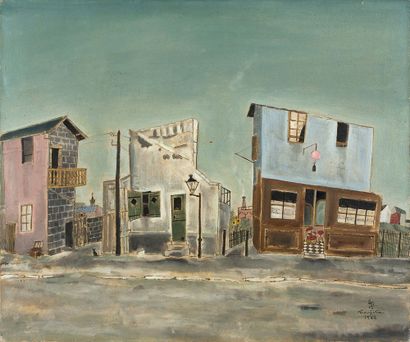
.jpg)
.jpg)

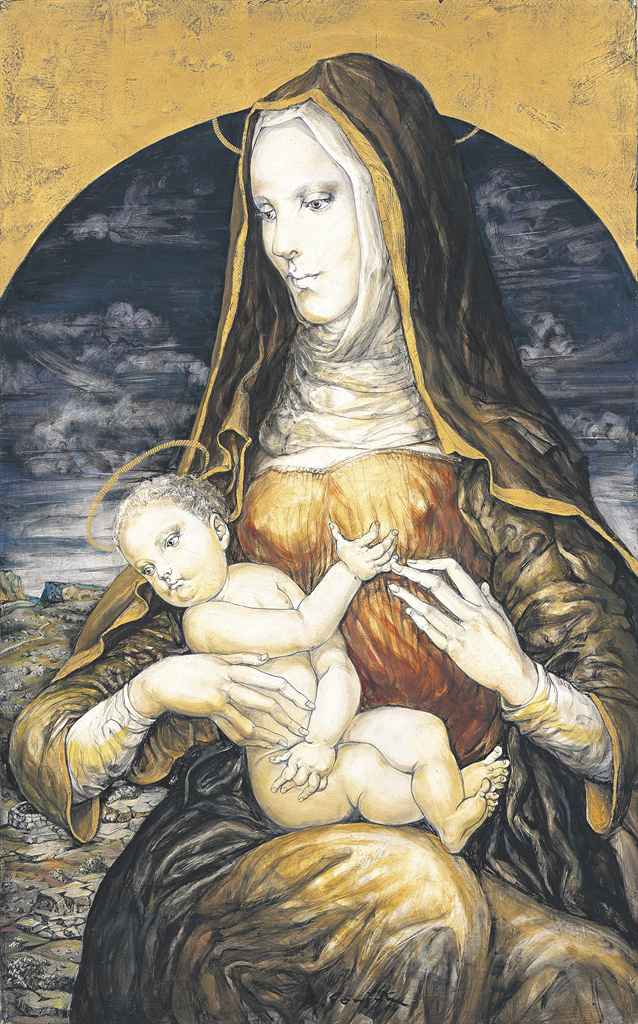
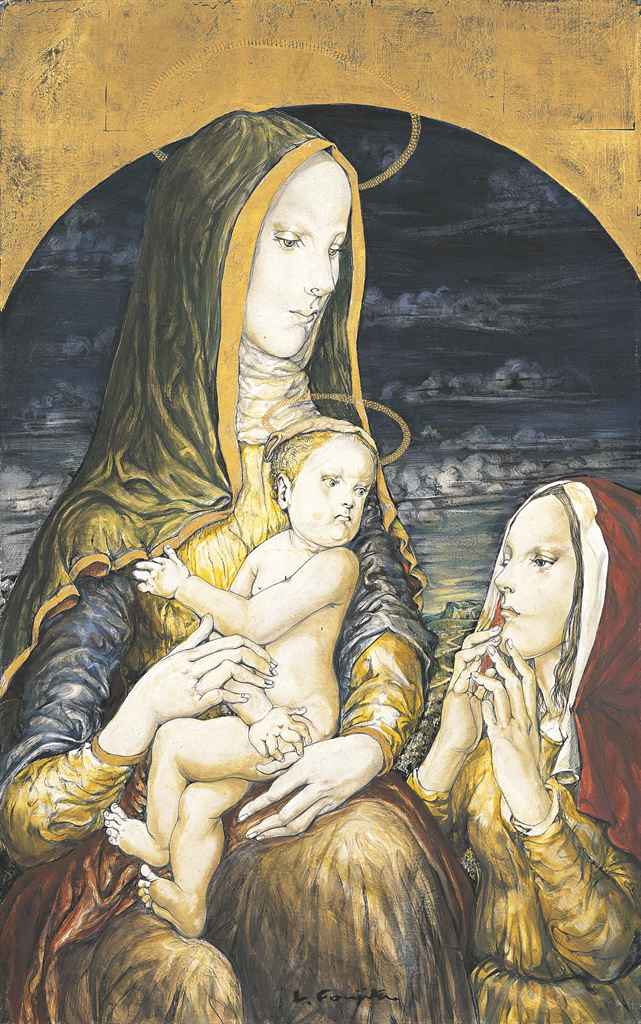
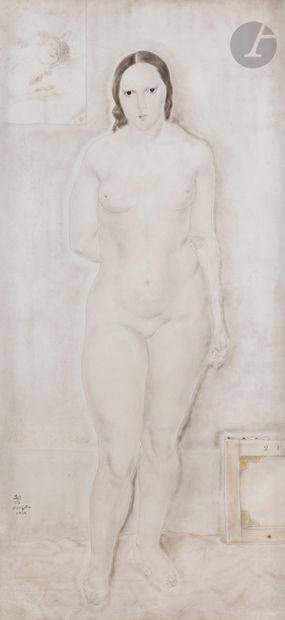
.jpg)
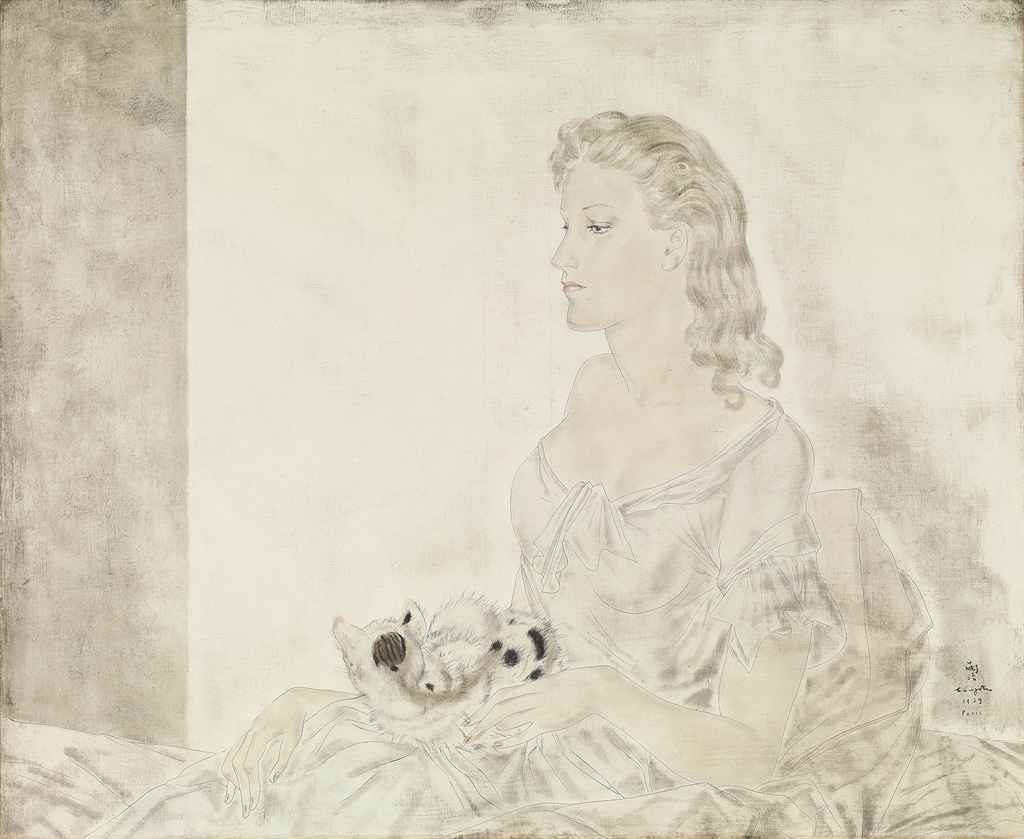
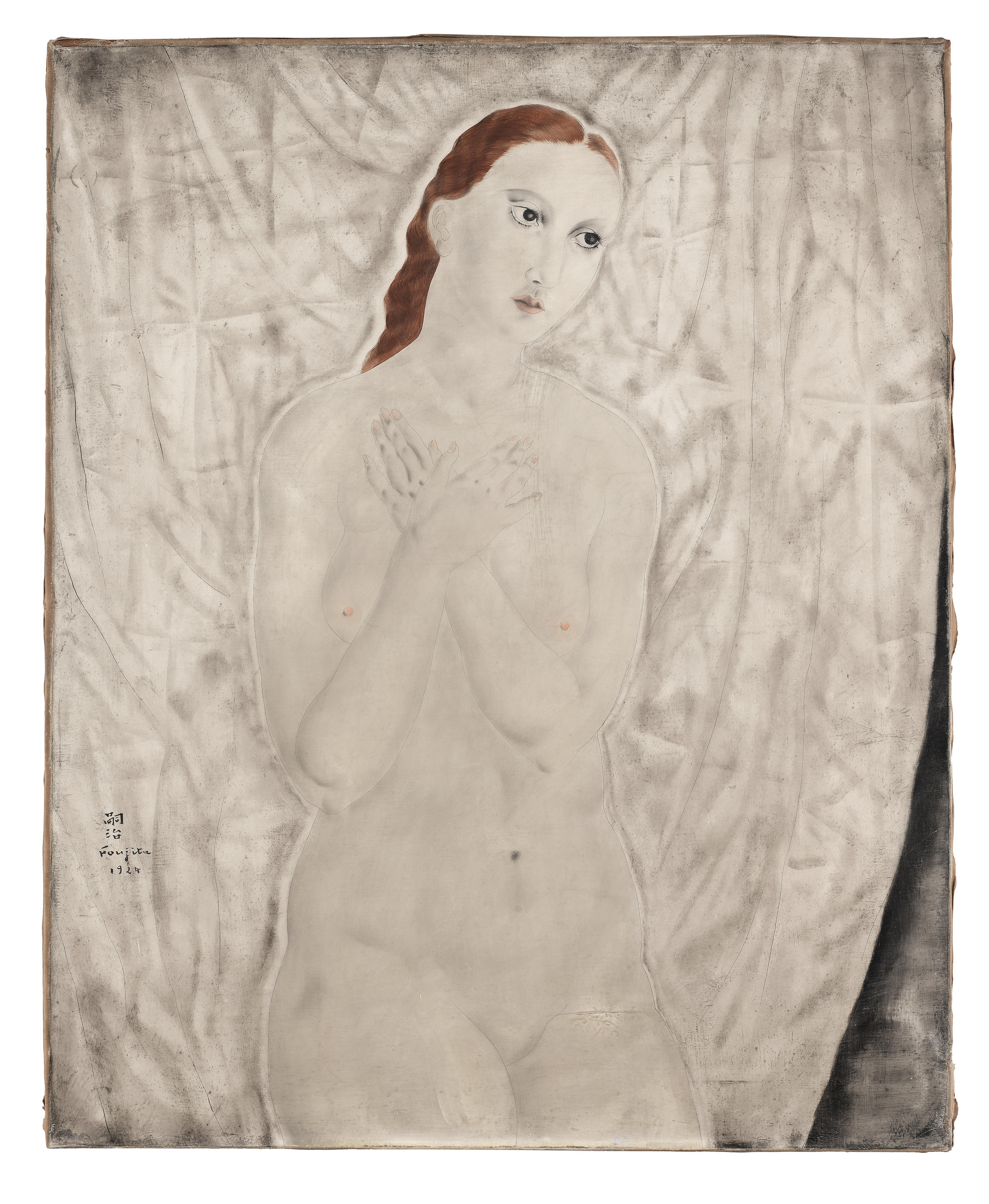
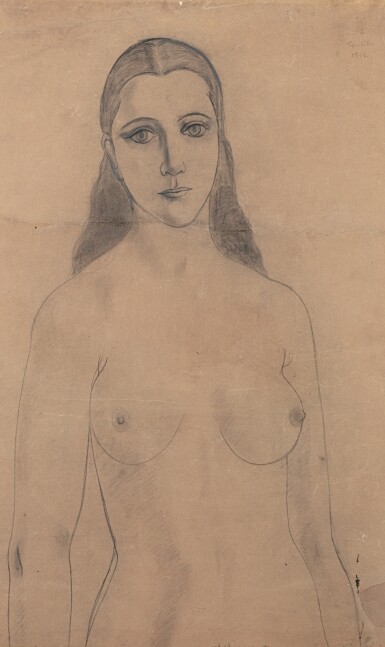

Testen Sie LotSearch und seine Premium-Features 7 Tage - ohne Kosten!
Lassen Sie sich automatisch über neue Objekte in kommenden Auktionen benachrichtigen.
Suchauftrag anlegen